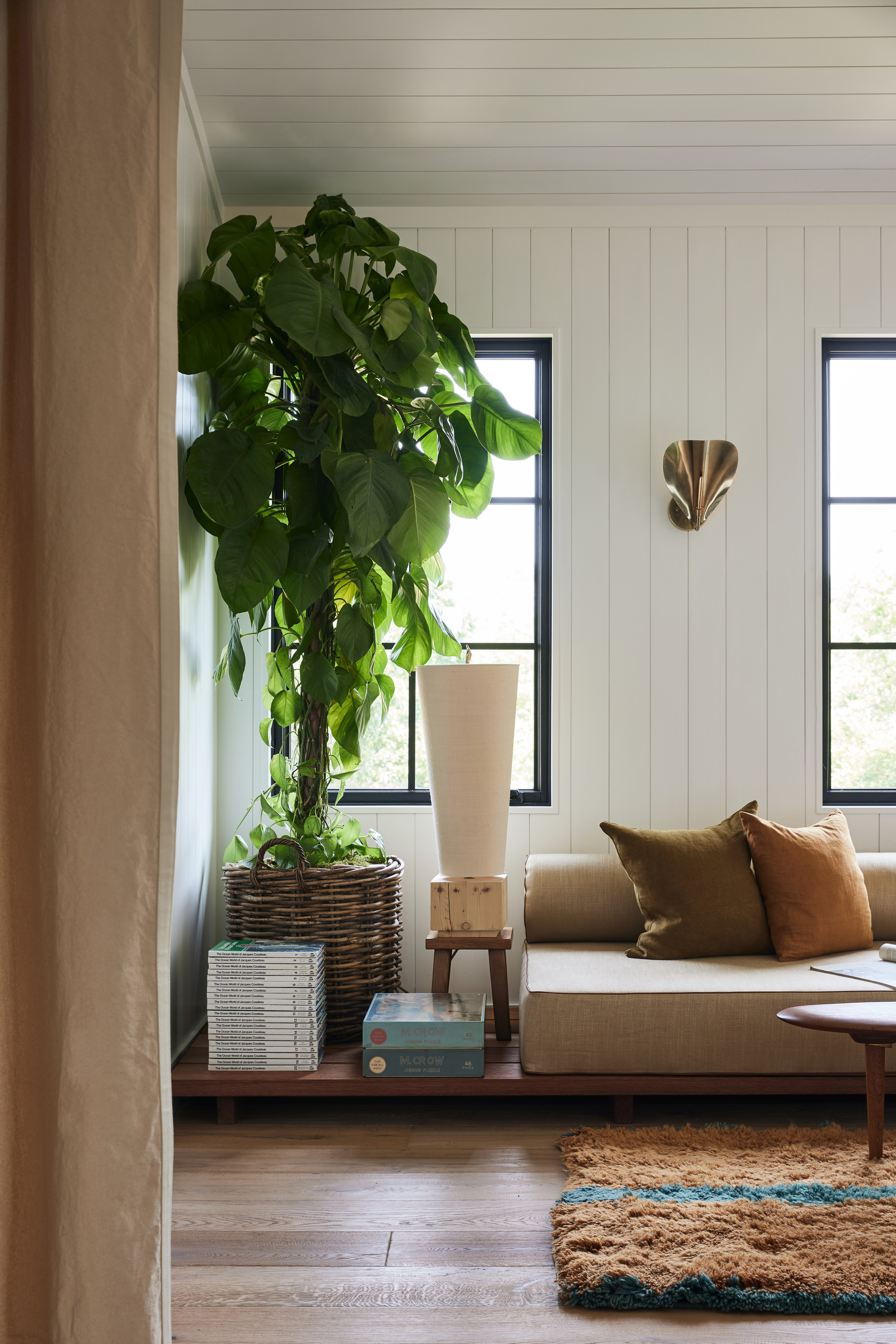
It might not seem obvious to less experienced plant parents, but your houseplants need some special attention in winter. As temperatures plummet and the nights draw in, your indoor greenery will be adapting to its new environment and you might need to intervene to provide the right care essential for their well-being.
It’s important to remember that houseplants tend to rest through the winter season. They'll be growing much more slowly or may become completely dormant, but that doesn't mean you can throw your plant care out of the window. Providing the right amount of light and a comfortable temperature for your plants are vital factors to consider. And, if you hadn't yet figured it out, that may involve moving them from their usual spot.
To find out what you need to do to keep your houseplants happy and healthy this season, I asked plant experts for their tips on how to care for your best houseplants. Here's what they had to say, alongside their advice on where to position your plants over the next few months.
Should plants be moved in winter?

Decorating with plants isn't just a case of placing them wherever you like, you'll need to meet their specific needs, too. During winter, your houseplants will need a lot of light to make up for the shorter days which is likely to involve moving them, and you'll also need to pay attention to the temperature inside your home.
‘Keep your indoor environment between 65 - 75°F,’ advises Zahid Adnan, plant expert at The Plant Bible. This means you might need to move your plants away from a window, but you should also be wary of moving them too close to artificial heat sources as they can dry them out or damage their leaves.
Although indoor plants require less water in winter, they still need consistent moisture which means paying attention to the humidity level in your space. ‘The dry indoor air during this season can be combated with a humidifier or by placing a water tray near the heating source,' explains Gene Caballero, plant expert at Your Green Pal. 'They'll benefit from increased humidity and a stable temperature.' You can check the soil humidity with this soil moisture meter for house plants from Amazon.
Where should indoor plants be placed in winter?

As the days are shorter, providing your indoor garden with the right amount of light is more important than ever. ‘During winter, place your houseplants in areas where they can receive ample sunlight, such as near south-facing windows,’ advises Gene. ‘This compensates for the shorter days and less intense sunlight.'
When placing your plants by a window, make sure the light is indirect. In most cases, though, the difficulty this time of year is finding enough sunlight. ‘For optimal light, you should make sure all of the windows—both inside and outside—are clean,’ suggests Mike Lansing, expert at Planters Digest. Zahid adds that ‘if this is not possible, consider using grow lights to supplement light'. We love this full-spectrum plant light from Amazon which is perfect for anyone with multiple plants.
Besides lighting, consider the temperature of your plants, too. 'Keep them away from drafty windows or doors and heat sources like radiators, which can dry them out,’ says Gene. If you usually keep your plants on a windowsill, it might not be suitable during winter. If you feel a draft or have single-glazed windows, it's best to move your plants somewhere warmer. ‘In order for the leaves to effectively absorb the limited light, make sure that any dust that has accumulated on them has been removed,’ adds Mike.
To offer your plant the moisture levels they need from the air, consider moving them into a steamy spot. ‘Bathrooms with windows are a fantastic choice as the humidity from a hot shower creates an ideal level of humidity,’ says Zander Caruso of Barton Springs Nursery. This is especially important for humidity-loving houseplants like the spider plant, Boston fern, and peace lily.
How should you safely move houseplants in winter?

If a plant has been in one position for a prolonged time, it probably won't be happy when you first move it. ‘When transporting them to a new spot, gradually acclimate them to the temperature change and avoid shock,' explains Tony. 'You can use a dolly or cart to move larger plants safely.'
As your plant settles into its new home, you'll also need to pay close attention to its health and you may need to adjust how often you water your houseplants. ‘Ensure the plant is well-watered before the move to prevent shock,' says Gene. 'If you have to take the plant outside, wrap the pot and the foliage gently in plastic or fabric to protect it from the cold, even if it's just for a short walk to the car.'
For healthy and happy houseplants that flourish come spring, follow these tips to protect them from the cold, offer them enough light, and provide the right humidity level. All in a day's work of plant parenting!
Price: $29.99
This indoor plant light will supplement the lack of natural light in the winter months.







